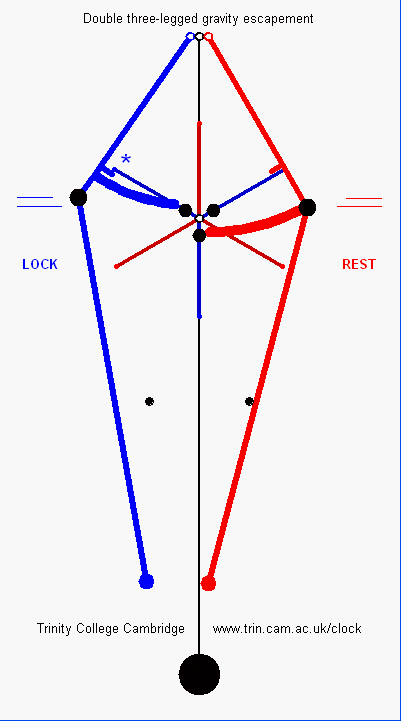

- 18 Dec 2010 [12:00]
- It is good to see that the clock has settled down to where it was. [link]
- 18 Dec 2010 [12:01]
- Conclusion on temperature sensitivity of sensor: It seems that the sensor setup is not temperature sensitive over the range of temperature changes observed in the Bedmaker Effect (below 1C change). The key indicator is seen here [link] where the amplitude change when a hairdrier is blown onto the sensor is in the wrong direction.
- 18 Dec 2010 [09:39]
- Expt 3: [link] Now a hair drier is used to warm up the sensor, and at the same time part of the pendulum shaft is warmed up (it is not possible with a hair drier to target the sensor being so close to the pednulum shaft). We see that there is a small change in indicated amplitude, and this is downwards consistent with the negative temperature sensitivity of the sensor as found in expt 1. But most significant is a very large change in going (slope of the drift) to -1700ms/day. This is consistent with lengthening of the pendulum due to thermal expansion, and it is a large effect because the hair drier is quite hot.
- 18 Dec 2010 [09:33]
- Here [link] I bumped the pendulum while moving the temperature sensor into the pendulum chamber. The idea now is that the temperature indicated on the website is now the temperature inside the pendulum chamber rather than in the clock case.
- 18 Dec 2010 [09:21]
- Expt 2: [link] The same again, but the soldering iron is in place for about 5 minutes. This time there is a bigger effect on amplitude (about -0.2mrad) but again no significant effect on going. The thing to note is that the indicated amplitude change is negative, so that the effect of rising temperature is to reduce the indicated amplitude, but temperature change does not appreciably change the indicated rate of Going. The air temperature that the soldering iron produces around the sensor is HOT - very much higher than anything that the central heating will produce. It seems then that while the sensor is indeed temperature sensitive it cannot explain the Bedmaker Effect.
- 18 Dec 2010 [09:17]
- Experiments, in the light of helpful comments by Dwight Elvey who rightly points out that the optic sensor is probably temperature senitive. See [link] . Expt 1: placed a hot soldering iron under the sensor for about 30 seconds (wanting to warm up the sensor without warming up anything else). Note that the amplitude drops by about 0.05mrad while the going (slope of the drift) is unchanged.
Download data





